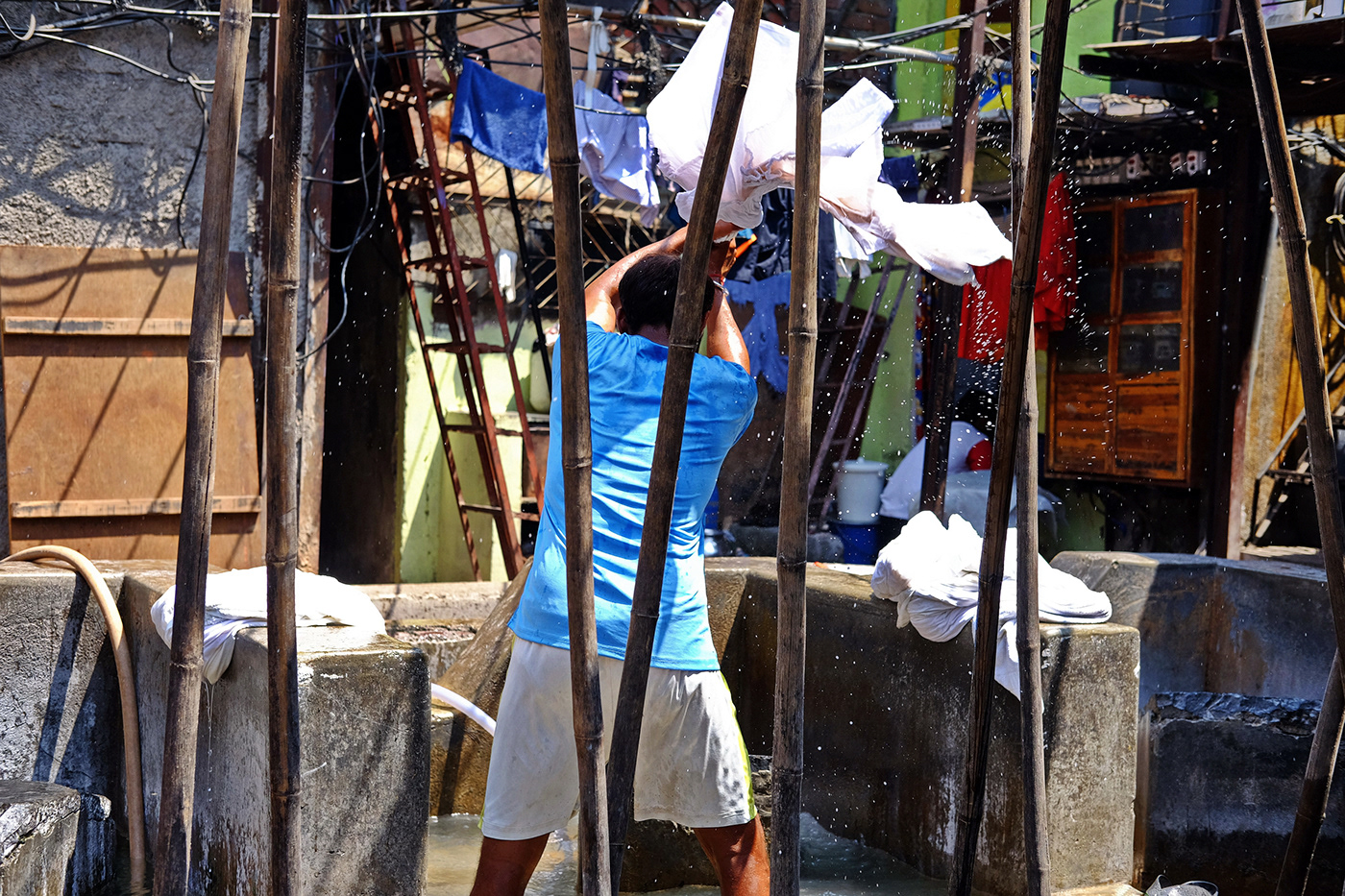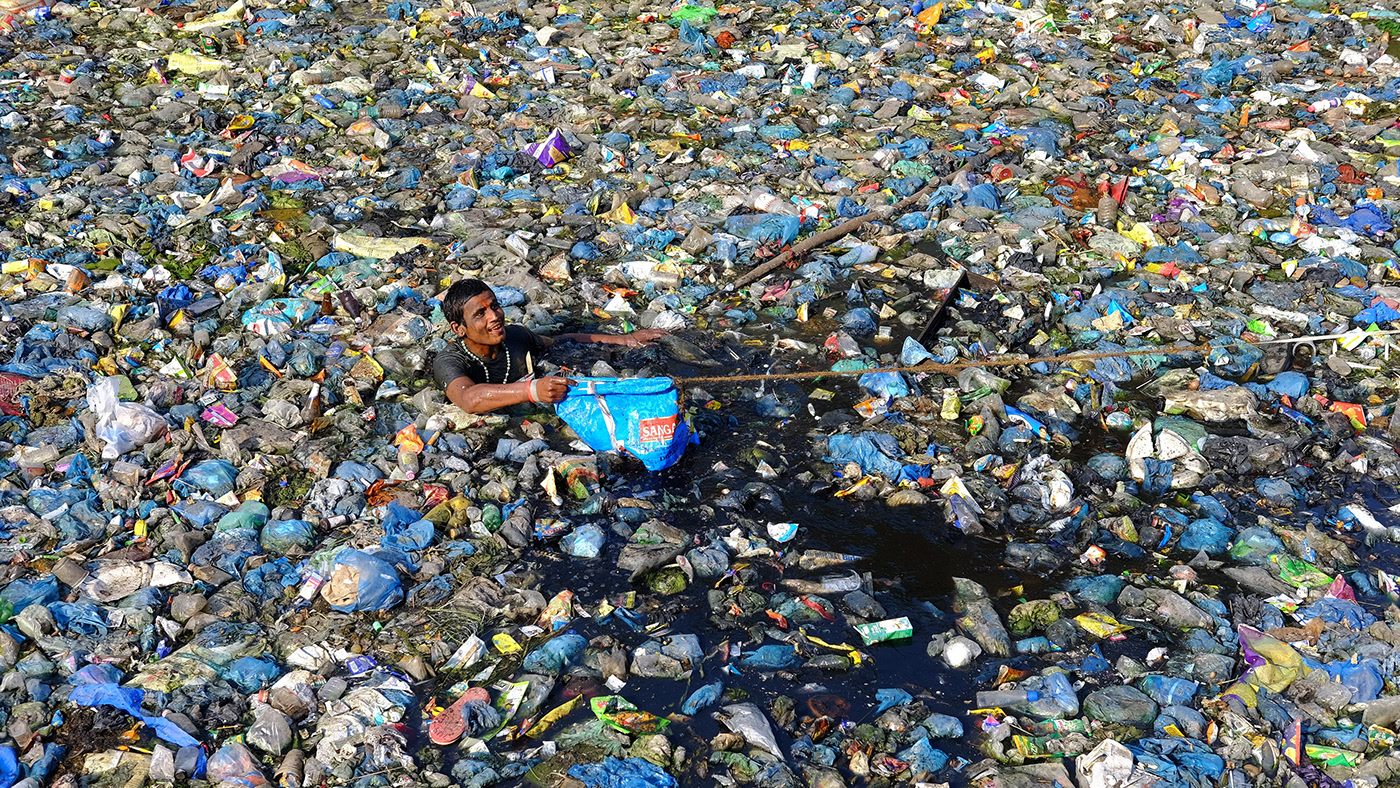
Three boys in a small alley of the Colaba slum.

A washerman flogs laundry against a concrete stone at the 140-year old Dhobi Ghat washing hub from the British-era.





India’s financial capital, Mumbai, counts around 2,000 urban slums, accommodating 60 per cent of the city’s population. These primarily informal settlements include Asia’s biggest one: Dharavi, which is sandwiched between two main suburban railway lines; in the shape of a heart. And with one million people sharing this 2.2 square kilometre piece of land, things are tight.
Insufficient living space, however, is just one example of the difficulties: Many slum houses do not have proper doors. Instead, families use a trapdoor in a ceiling to get into their homes; usually 4x4 meter rooms stacked on top of one another, barely making space for a kitchen, a living room and one shared bedroom. Interestingly, people are still able to afford smart phones, and it is not uncommon to befriend a slum resident on WhatsApp. On the other hand, families lack clean water and individual taps, including an indoor toilet.
Amid piles of trash and electrical wires dangling around narrow filthy lanes, though, there is something unexpected: beauty, culture and marvel. Believe it or not, Dharavi is so much more than a ‘place of the poor’ and not to be confused with the television version of a crime scene. It offers shelter to many migrant workers who recycle plastic and aluminium, produce leather goods and pottery, while generating a turnover of USD 700 million a year. That makes it a smart slum, run by hard working citizens and active contributors to society.

A Mumbaikar digs through garbage in a river of trash entering the slum clusters of Khar Danda.



